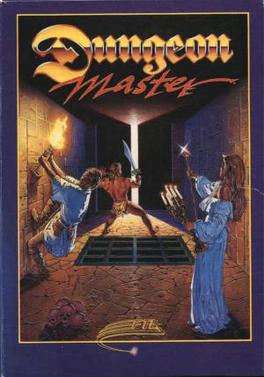
Dungeon Master is a role-playing video game featuring a pseudo-3D first-person perspective. It was developed and published by FTL Games for the Atari ST in 1987, almost identical Amiga and PC (DOS) ports following in 1988 and 1992.

Times of Lore is a 1988 action role-playing game that was developed and published by Origin Systems for several platforms, including PC, Commodore 64/128, ZX Spectrum, Amstrad CPC, Atari ST, Apple II, NES, and Amiga.

Ultima IV: Quest of the Avatar, first released in 1985 for the Apple II, is the fourth in the series of Ultima role-playing video games. It is the first in the "Age of Enlightenment" trilogy, shifting the series from the hack and slash, dungeon crawl gameplay of its "Age of Darkness" predecessors towards an ethically-nuanced, story-driven approach. Ultima IV has a much larger game world than its predecessors, with an overworld map sixteen times the size of Ultima III and puzzle-filled dungeon rooms to explore. Ultima IV further advances the franchise with dialog improvements, new means of travel and exploration, and world interactivity.

The Bard's Tale II: The Destiny Knight is a fantasy role-playing video game created by Interplay Productions in 1986. It is the first sequel to The Bard's Tale, and the last game of the series that was designed and programmed by Michael Cranford.

Autoduel is a role-playing video game published by Origin Systems for the Atari 8-bit computers, Commodore 64, Apple II, and IBM PC compatibles in 1985. It was released in 1987 for the Atari ST and in 1988 for the Amiga and Macintosh. The game is based on the Steve Jackson Games series Car Wars.

Roadwar 2000 is a 1986 video game published by Strategic Simulations, Inc. It is a turn-based strategy game set in a post-apocalyptic future which resembles the world portrayed in the Mad Max films.

The Faery Tale Adventure is a 1987 action role-playing video game designed by David Joiner and published by MicroIllusions for the Amiga, and later ported to the Commodore 64, MS-DOS, and Sega Genesis. The MS-DOS version is titled The Faery Tale Adventure: Book I. Microillusions also released a "Book 1" version for the Amiga which was going to be the start of a series of games, according to Talin, but bankruptcy prevented it. The initial version was produced for the Amiga 1000 and featured the largest game world to that date. A sequel, Faery Tale Adventure II: Halls of the Dead, was released in 1997.

The Kristal is an adventure game first released in 1989 for the Amiga computer. It was later released for the Atari ST and MS-DOS. It was developed by the UK-based company Fissionchip Software, and published in Europe by Addictive Games and in the US by Cinemaware. Unusually for a video game, the game is based on a play, The Kristal of Konos, written in 1976; the authors of the play worked together with the game developers and the play was never shown in theatres or on film before the game's release. A dialog introducing the setting recorded by Patrick Moore, who introduced both the game and play.
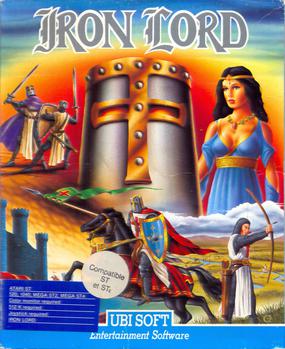
Iron Lord is an adventure video game developed by Orou Mama and Ivan Jacot for the Atari ST and published by Ubi Soft in 1989. It was ported to the Amiga, Acorn Archimedes, Amstrad CPC, Commodore 64, ZX Spectrum, and MS-DOS.
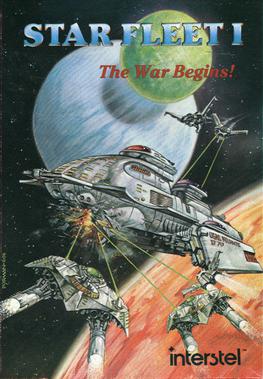
Star Fleet I: The War Begins is a 1984 strategy video game designed by Trevor Sorensen and developed by Interstel. It was released for Apple II, MS-DOS and Commodore 64. Versions for the Commodore 128, Atari ST, and Atari 8-bit computers were released in 1986 and versions for the Amiga and Mac were released in 1987. The game was successful enough to spawn sequels which are collectively known as the Star Fleet series.

Archipelagos is a 1989 first person action and strategy video game developed by Astral Software and playable on Amiga, Atari ST, and MS-DOS.

Test Drive is a racing video game developed by Distinctive Software and published by Accolade, released in 1987 for the Amiga, Atari ST, Commodore 64, and DOS, in 1988 for the Apple II, and later ported for the PC-98 in 1989. It is the first game in the Test Drive series.

Shanghai is a computerized version of mahjong solitaire published by Activision in 1986 for the Amiga, Atari ST, Atari 8-bit computers, Commodore 64, MS-DOS, classic Mac OS, Apple IIGS, and Master System. Shanghai was originally programmed by Brodie Lockard. It was released as an arcade video game by Sunsoft in 1988.
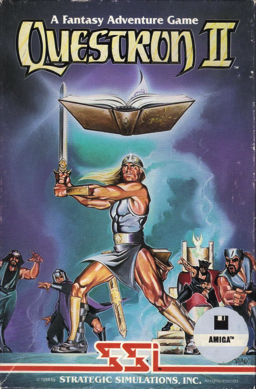
Questron II a 1988 role-playing video game published by Strategic Simulations for the Apple II, Apple IIGS, Atari ST, Commodore 64, IBM PC, and Amiga. It is the sequel to 1984's Questron. The story and original design is credited to Quest Software, the programming and artwork is credited to Westwood Associates.

Skyfox II: The Cygnus Conflict is a space combat computer game developed by Dynamix and published by Electronic Arts in 1987 for the Commodore 64 as a sequel to the original Skyfox for the Apple II. It was ported to the Amiga, Atari ST, and MS-DOS. The creator of Skyfox, Ray Tobey, was not involved in this game.

Final Assault, known as Chamonix Challenge in Europe, originally Bivouac in French, is a mountaineering simulation distributed by Infogrames and Epyx in 1987 for the Amiga, Amstrad CPC, Apple IIGS, Atari ST, Commodore 64, MS-DOS, Thomson and ZX Spectrum. The original release of the game was copy protected.

Transylvania is an adventure video game published by Penguin Software. It was released for the Apple II in 1982 followed by ports to the Atari 8-bit computers and Commodore 64. A Mac conversion was published in 1984, then versions for the Amiga, Atari ST, and MS-DOS in 1985.

Ogre is a 1986 computer game based on the Ogre board wargame. It was released by Origin Systems for the Apple II, Amiga, Atari 8-bit family, Atari ST, Commodore 64, MS-DOS, and Macintosh.

Phantasie is the first video game in the Phantasie series.
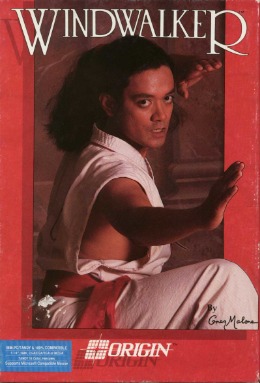
Windwalker is a 1989 video game published by Origin Systems.




















